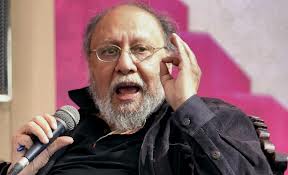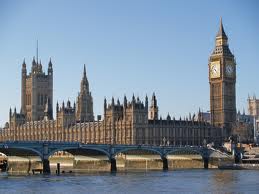A highly disastrous fire, claiming the lives of at least 80 in-patients, broke out in the basement of the annexe of the 190-bed, centrally air conditioned, seven-storied AMRI hospital located in the crowded, congested Dhakuria area of Kolkata around 3.30 AM today. Three staff of the hospital are said to be among the dead.
The hospital was co-founded 1n 1996 by the Emami and Shrachi Groups and the Government of West Bengal.
Around 25 fire engines were pressed into service to douse the fire; hydraulic ladders and glass cutters were brought in to cut the window glasses and rescue patients.
Firemen brought out the injured patients and the bodies of the dead with the help of ropes and ladders. It is believed that there are many more patients trapped inside the hospital building. Javed Khan, Minister for Fire Services, looking after the rescue work said: “Some more people are believed to have been trapped. We have already rescued over 50 people.”
The hospital has two blocks other than the annexe engulfed by fire; some of the rescued patients have been shifted there.
A team from the National Disaster Response Force (NDRF) checked the sub-basement of the hospital for radiation leaks but found none.
Some local residents said that the hospital authorities did not allow them to enter the hospital early in the morning when the fire broke out and that more lives could have been saved had they been allowed to step in and help.
The Government of West Bengal claimed that the hospital administration did not take any steps to rescue the patients trapped inside the building.
On a visit to the hospital in the morning, Mamata Banerjee, Chief Minister of West Bengal, said that 41 of the bodies had been shifted to the SSKM Hospital in South Kolkata while some were still at the AMRI Hospital building. The bodies were being identified and autopsies of some of the bodies have been completed. Colour photographs of the bodies yet to be identified were going to be displayed outside the mortuary and the bodies would be sent to the homes of the respective victims.
Subrata Mukherjee, Minister for Public Health Engineering, Government of West Bengal, said: “It was horrifying that the hospital authorities did not make any effort to rescue trapped patients.” He said that the senior functionaries of the hospital fled the scene when the fire broke out and said that stringent action would be taken against the hospital.
On the basis of a report lodged by the fire brigade, the police have filed a First Information Report against the hospital.
Mamata Banerjee, Chief Minster, West Bengal, said: “They will be arrested. We will take strict action against the hospital.”
She said that it was “an unforgivable crime” and promised to deliver “the harshest punishment possible” for those found responsible for the incident. She further said: “Quick action will be taken against the hospital after proper inquiry.”
Mrs.Pratibha Patil, President of India, sent a message to the Gocernor of West Bengal expressing her grief over the accident and the loss of life.
A statement released by the Prime Minister’s Office said: “The prime minister expresses shock and anguish over the loss of lives in the hospital fire in Kolkata. He conveys his condolences to the families of those who lost their lives in the tragedy.”
The Prime Minister announced an ex gratia payment of Rs.2 lacs to the families of each of the deceased and Rs.50,000 to each of the injured in the accident.
Earlier in the day, Ms. Banerjee announced financial aid of Rs.3 lac if the members of the families of the victims were not financially sound and requested the government for the aid. She has also said: “If anybody appeals for a government job. We will also try to help them out.”
The hospital authorities have issued a press statement to the effect that the hospital would pay Rs 2 lakh to the families of each of the deceased.
Now, that’s all very well. Aid, compensation … But can the hospital bring the dead back? Can even the government – which is a co-founder of the hospital – bring back the dead?
Do our authorities wake up only when disaster strikes … only to forget it all once a disaster fades from public and bureaucratic memory? What lessons have been learnt from the fire that broke out on 23rd March 2010 in Stephen Court located in Park Street, Kolkata, and killed 43 people?
Why did the government allow the hospital built in a crowded area which could hamper rescue operations and could easily become a literal death trap in an emergency?
What steps did the government take, when the plans were approved, to ensure that the hospital had adequate fire-prevention measures and fire-fighting facilities?
Did the government ever care to verify compliance with the rules in this regard once the construction was completed?
Were there periodic inspections?
What did the hospital authorities themselves do? Did they implement the statutory provisions for safety in such high-rise buildings?
Do the Government of West Bengal and the Municipal Corporation realise – at least now – that Kolkata is full of such veritable death traps and that much has to be done beyond knee-jerk reactions once disaster strikes? Do they realise that much more paying lip service to the regulations is expected from our administrators?
What reply do the hospital authorities have to the allegation that they had prevented the local residents from entering the hospital to help when they noticed the fire? If that allegation be true, why can’t they be taken to task and prosecuted under the civil and criminal law of the land for offences other than criminal negligence and violation of safety procedures and norms?
Some have foresight, some act just at the nick of the moment, and some never act steeped as they are in perpetual sloth and ignorance. Our administrators at various levels seem to fall under this last category. Can even God save us from such people?
We at ‘Spectralhues’ pay homage to the victims of the accident and convey our heartfelt condolences to their families.
Tags: AMRI Hospital Fire AMRI Hospital Kolkata










